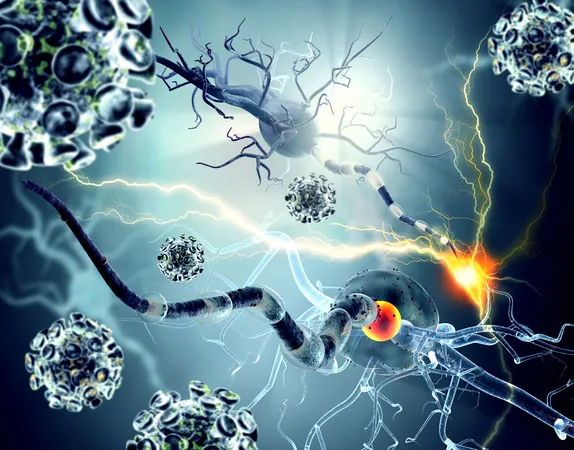
New Biomarkers Could Revolutionize Mild Cognitive Impairment Diagnosis
2024-09-23
Introduction
In a groundbreaking study published in the journal *Alzheimer’s & Dementia*, researchers have revealed that specific brain measurements, including blood flow dynamics and the brain's neurovascular coupling ability, outperform traditional risk factors like hypertension and high cholesterol in predicting mild cognitive impairment (MCI). This insight not only deepens our understanding of MCI, which affects approximately 18% of the global population, but also opens new avenues for proactive treatment before the condition escalates to dementia, a diagnosis projected to impact an astounding 152 million individuals by 2050.
Urgency of Research
Dr. Calin Prodan, a leading neurologist at the OU College of Medicine, emphasized the urgency of this research, stating, “Individuals with MCI are at the highest risk for progressing to dementia. We are working to identify the 'fingerprints' of MCI—what transformations occur in the brain as a person transitions from healthy aging to cognitive decline, and how can we intervene?”
Study Overview
The study examined the cerebral vasculature of older adults with MCI compared to age-matched controls. Participants were categorized based on specific cognitive assessments, ensuring a clear distinction for the MCI group. Cogitative tasks were administered alongside state-of-the-art functional near-infrared spectroscopy (fNIRS) that allowed researchers to track brain activity in real-time. Additionally, the study evaluated changes in extracellular vesicles (EVs) using small-particle flow cytometry, which revealed some startling findings: neurovascular coupling and functional connectivity were notably diminished in those suffering from MCI.
Key Findings
Focusing on the left-dorsolateral prefrontal cortex, a region critical for executive functions, the research indicated elevated concentrations of cerebrovascular endothelial EVs (CEEVs) in participants with MCI. These changes suggest that damage to the inner lining of blood vessels leads to increased levels of CEEVs, which are rare in healthy brains. Advanced imaging techniques confirmed that higher CEEV levels correlate with ischemic damage, highlighting significant blood flow deficiencies in the cerebral small vessels.
Implications
Dr. Cameron Owens, a dedicated researcher in the OU College of Medicine MD/PhD program, noted the implications of these findings. “Individuals with MCI exhibit a drastic alteration in brain activity due to a loss of their compensatory mechanisms,” he remarked.
Future Directions
The biomarkers identified—NVC, CEEVs, and functional connectivity—show promise for serving as indicators of cerebrovascular health. This could facilitate individualized treatment plans, moving beyond demographic or comorbidity factors to tailor interventions such as pharmacological therapy, non-invasive brain stimulation, or cognitive behavioral therapy.
COVID-19 Considerations
Moreover, researchers acknowledge the potential impact of the COVID-19 pandemic on dementia progression in patients with MCI, an area slated for further investigation. As Dr. Andriy Yabluchanskiy pointed out, “Every brain is unique, and recognizing these predictors can lead to personalized approaches in addressing cognitive decline.”
Conclusion
This study not only enhances our understanding of MCI but also hints at the powerful role of cerebrovascular health in cognitive function, paving the way for early diagnosis and targeted treatments. The future of dementia intervention may very well rely on these critical insights into brain function and health.


 Brasil (PT)
Brasil (PT)
 Canada (EN)
Canada (EN)
 Chile (ES)
Chile (ES)
 España (ES)
España (ES)
 France (FR)
France (FR)
 Hong Kong (EN)
Hong Kong (EN)
 Italia (IT)
Italia (IT)
 日本 (JA)
日本 (JA)
 Magyarország (HU)
Magyarország (HU)
 Norge (NO)
Norge (NO)
 Polska (PL)
Polska (PL)
 Schweiz (DE)
Schweiz (DE)
 Singapore (EN)
Singapore (EN)
 Sverige (SV)
Sverige (SV)
 Suomi (FI)
Suomi (FI)
 Türkiye (TR)
Türkiye (TR)